All throughout the nation, modern facades and architecture are becoming more and more popular. One of the features that homeowners and buyers most frequently desire for both the inside and exterior of their homes is a modern home’s exterior: clean lines and basic designs. Wood cladding has been given special attention in home designs lately since it can be a great way to both increase curb appeal and create fascinating focus points within. These 13 contemporary exterior cladding ideas will give you an idea of what you could utilise for your own property.
1. Reaching New Heights
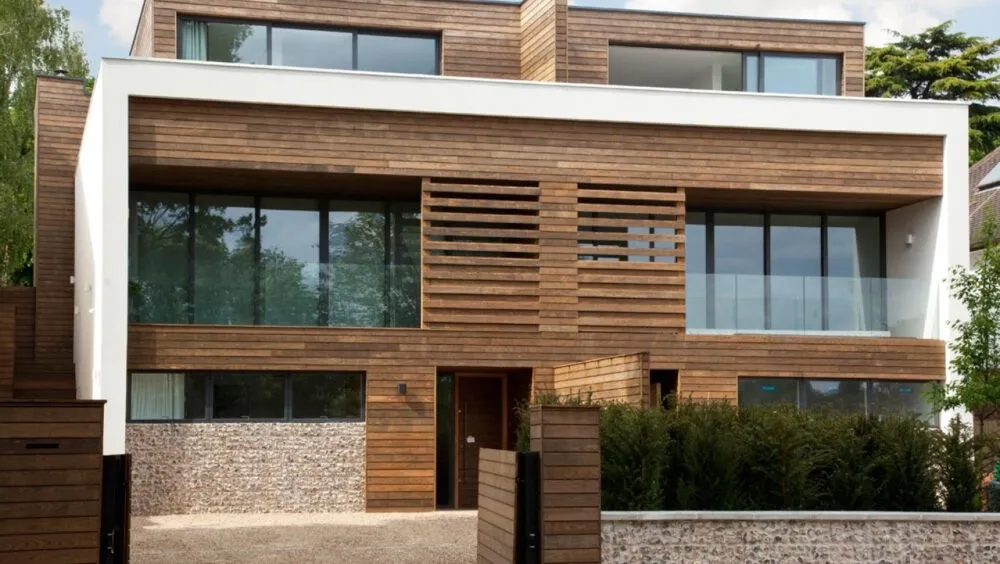
Traditionally, wooden boards on houses were placed horizontally, but now putting them up vertically is a popular trend for modern homes. Vertical boards make the house look taller by drawing the eye upward. Instead of making the home seem wider, the lines emphasize its height and shape. In this example, the vertical boards and angled roof make the house look taller and more impressive, adding a stylish industrial touch. It’s a fresh and modern way to update the outside of a home.
2. Modern Momentum
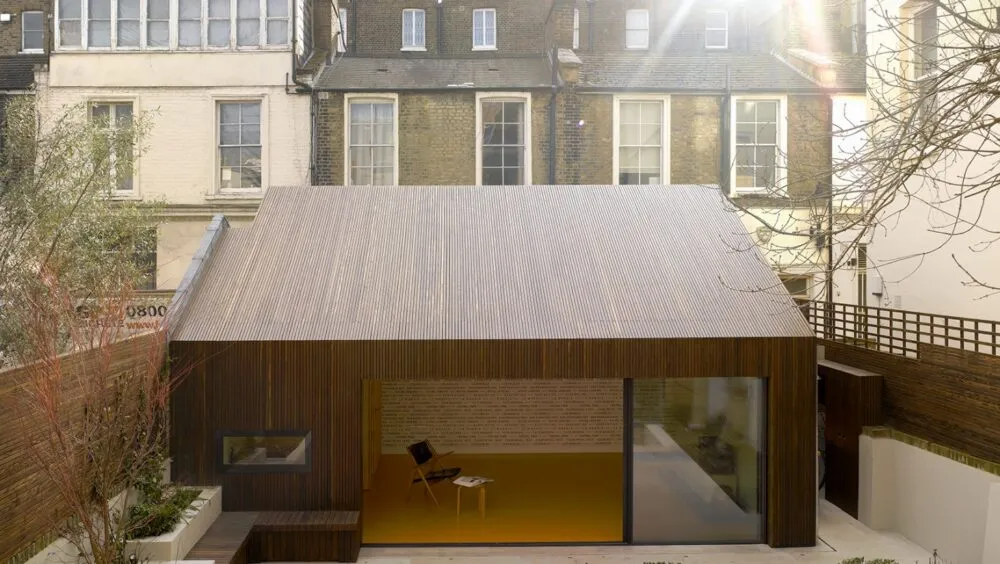
Vertical cladding is a popular way to give modern homes a sleek, stylish look, but why stop at just the walls? This home took it further by extending the wood cladding onto the roof, creating a smooth, unified design. It’s a bold, modern choice that makes the home stand out from traditional styles. The way the cladding flows from the walls to the roof highlights the home’s shape in a striking way. It also gives the whole property a clean and fresh look. While it might seem daring, the result is truly beautiful and shows how thinking outside the box can create a stunning home.
3. Open Front
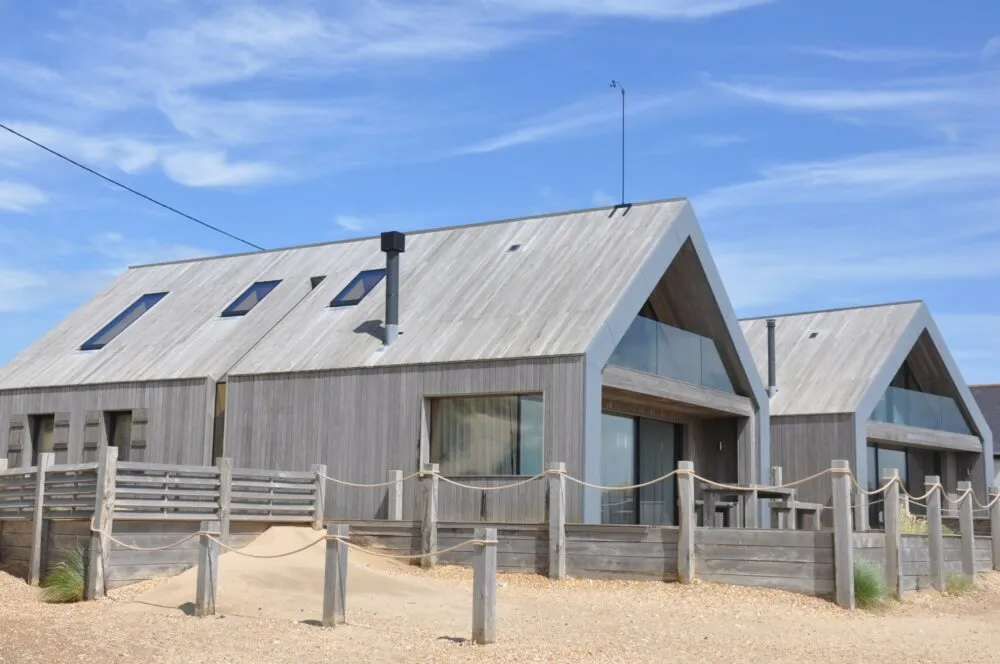
Many modern homes use lots of windows and skylights to bring in natural light, but these beach houses go a step further. By using the same cladding material on both the walls and the roof, they can keep the front of the house mostly open. This design choice not only offers amazing beach views but also lets in a lot of sunlight. The open front and uniform cladding make the homes look sleek and bright. It’s a great way to enjoy both the beautiful surroundings and plenty of natural light inside.
4. Transitional Design

This home is a great example of how traditional horizontal cladding can look modern when done right. The key is to keep the rest of the exterior very simple, with minimal decorative elements. By using horizontal cladding along the entire length of the house, the design highlights the building’s shape and structure. The home features large, pane-less glass windows and avoids extra details like moulding or trim, which helps maintain a clean and sleek appearance. This approach refreshes the classic horizontal cladding style and makes it feel contemporary and stylish.
5. Depth of Design

Many think cladding should be traditional, but modern design shows a new way. In this property, modified wood is used in different ways: for cladding, decking, ceilings, and privacy screens. This creative use makes the building look fresh and modern. Instead of sticking to one style, the wood adds depth and interest in various ways. The result is a stylish, updated look that changes how we view cladding. Using one material in multiple ways makes the building look more cohesive and impressive.
6. Mixed Materials
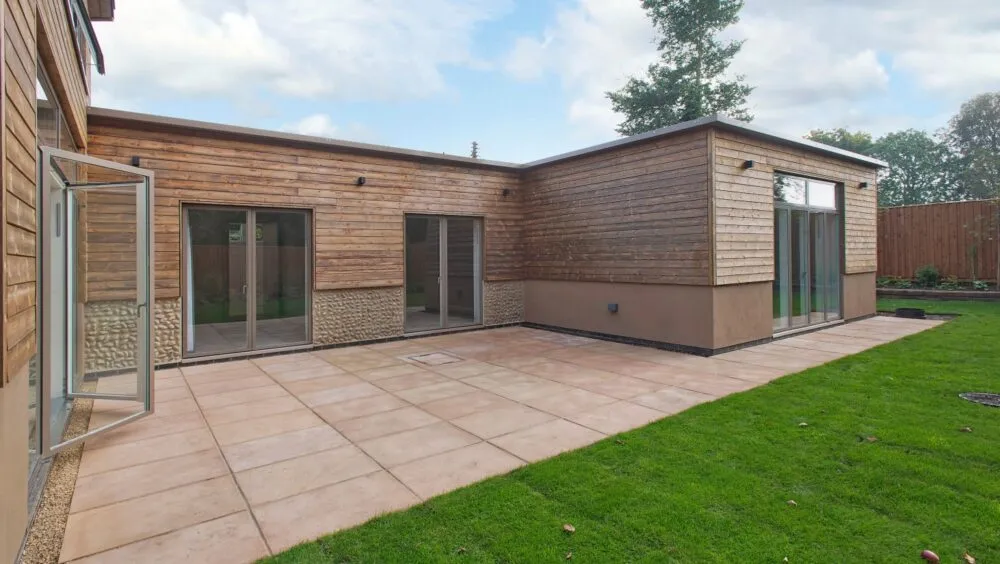
Horizontal lap cladding can make a home look longer, but for single-story homes, it might make them seem shorter. In this design, the cladding is combined with other materials. The wood is lifted a few feet from the ground, which helps create a sense of height. Notice that no moulding or trim board is used here. The materials at the bottom of the home are simple and muted, which keeps the look modern and fresh. This approach highlights how careful material choice and placement can affect the overall appearance of a home.
7. Two-Tone
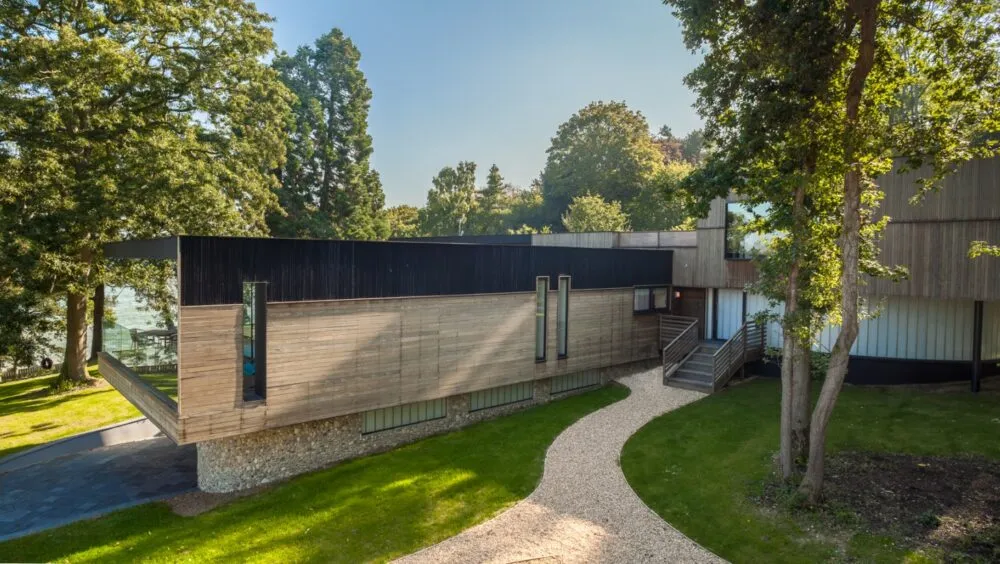
This modern home uses wood cladding in a really cool way with different styles. Some of the boards are laid out horizontally, while others go vertically on different parts of the exterior. This mix creates some great contrasts between the sections of the house. There’s also a dark strip of cladding along the top, adding extra style and flair. The combination of horizontal and vertical cladding, along with the dark top strip, makes the home look unique and eye-catching. This approach gives the house a fresh, modern vibe and highlights different parts of the exterior. Overall, the mix of cladding styles and colors makes the house stand out and look stylish.
8. Two Dimensional
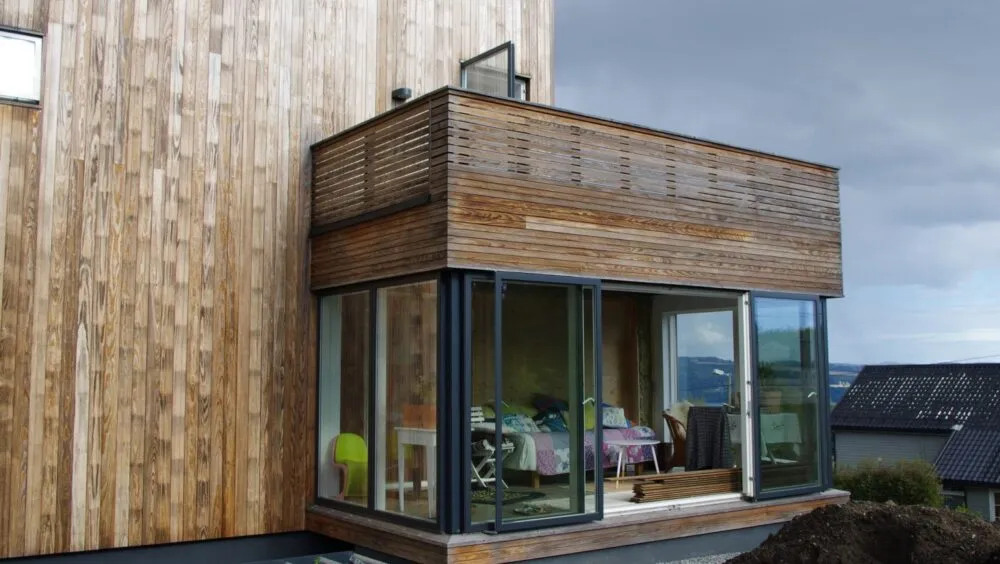
This home was renovated to become a stunning passive house. The cladding, made from sustainable modified wood, is installed both vertically and horizontally to add visual depth. This mix makes the home look dynamic and shows off the wood’s versatility. On the second-floor balcony, the cladding also serves as a railing and privacy screen. By slightly changing the spacing between the boards, the design blends function with style. This clever approach makes the home look modern and stylish while using eco-friendly materials. The result is a beautiful, practical home that’s good for the environment.
9. Detailed Emphasis

The big glass windows are the main feature of this modern home, so the rest of the exterior was designed to highlight them. Natural wood cladding was used to complement the windows with a simple, clean look that brightens the home. The cladding gives the exterior a smooth, unified appearance. Vertical panels were added between the windows to contrast with the horizontal cladding and make the windows stand out even more. This design keeps the windows as the main focus and makes them look even clearer and more impressive.
10. Accented Frame

This remodeled farmhouse uses the same cladding on the walls, roof, and deck to create a smooth, continuous look. This choice helps the house’s front stand out with an open glass design that lets in plenty of natural light. The cladding’s long, solid lines work well with the different shapes and sizes of the windows, adding a touch of simplicity and harmony. Overall, the design gives the farmhouse a modern and unified feel, emphasizing both its style and its connection to its surroundings.
